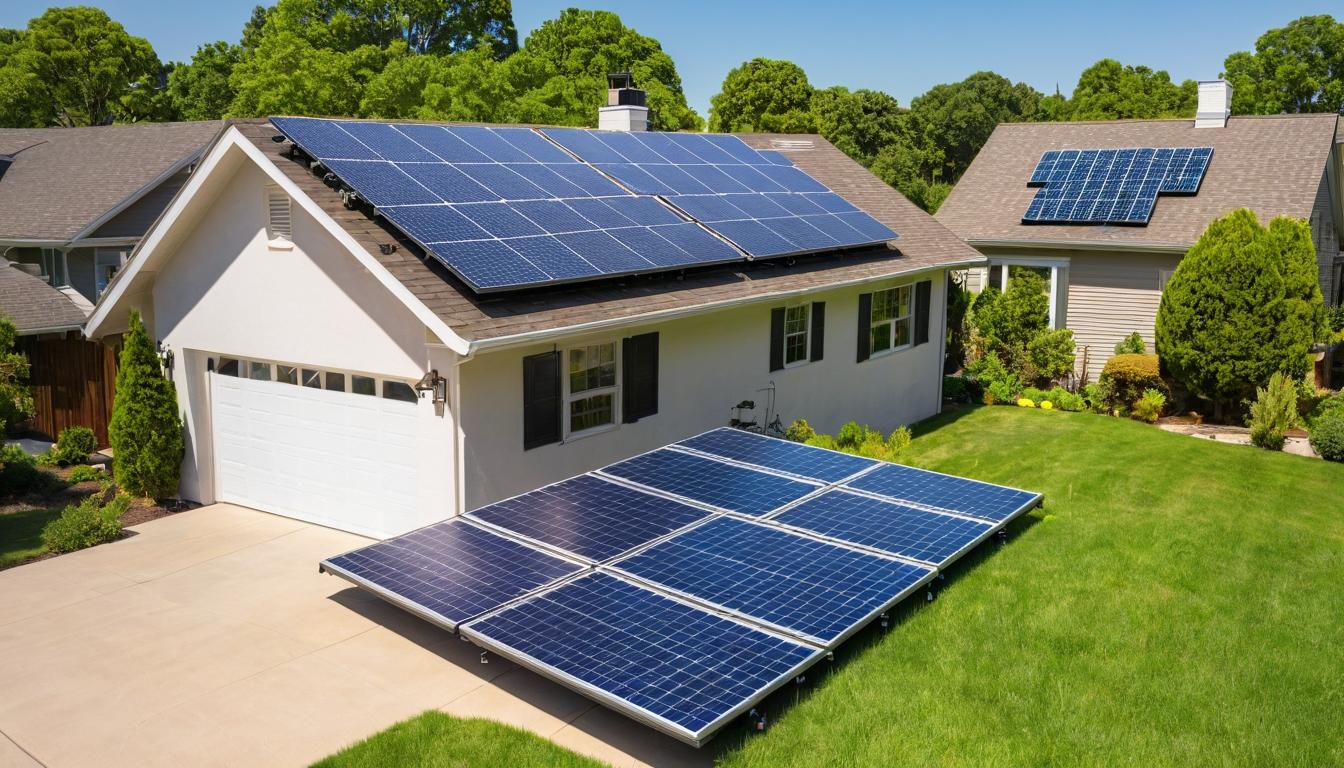Across suburban neighborhoods from California to Florida, a quiet revolution is unfolding on rooftops that most people barely notice. While politicians debate energy policy in Washington and corporate boardrooms plan massive solar farms, ordinary homeowners are taking power generation into their own hands—literally. The solar panel installation that was once a novelty reserved for environmental enthusiasts has become a mainstream financial decision for millions of American families.
What's driving this transformation isn't just environmental consciousness, though that certainly plays a role. The real story lies in the dramatic cost reductions that have made solar power cheaper than grid electricity in most parts of the country. Since 2010, the cost of solar panels has plummeted by over 80%, turning what was once an expensive statement into a practical investment. Homeowners who installed systems five years ago are now seeing their electricity bills disappear while their neighbors continue paying rising utility rates.
The technology behind this revolution has evolved in ways that would astonish even solar enthusiasts from a decade ago. Modern panels aren't just more efficient—they're smarter, more durable, and integrated with battery storage systems that can power homes through blackouts. The latest perovskite solar cells, now moving from laboratory to production, promise another leap in efficiency that could make today's panels look primitive by comparison. Meanwhile, microinverters and power optimizers have solved the shading problems that once made solar impractical for many properties.
Battery storage has emerged as the game-changing companion to solar panels that makes the combination truly transformative. The Tesla Powerwall and competing products from LG, Enphase, and others have turned solar systems from simple bill-reducers into resilient power sources that can operate independently during grid outages. For homeowners in hurricane-prone regions or areas with unreliable grids, this backup power capability has become as valuable as the ongoing electricity savings.
Financing options have democratized solar access in ways that were unimaginable just a few years ago. The old model of paying $30,000 cash upfront has been replaced by solar loans with zero-down options, power purchase agreements where homeowners pay only for the electricity generated, and various leasing arrangements. This financial innovation has opened solar to middle-class families who previously saw it as beyond their reach, creating what industry insiders call "the democratization of energy generation."
The regulatory landscape, however, remains a patchwork of incentives and obstacles that varies dramatically by state and even by utility territory. Net metering policies—which determine how much homeowners get paid for excess electricity they send back to the grid—have become political battlegrounds between solar advocates and traditional utilities. In some states, utilities are fighting to reduce compensation for solar exports, while in others, progressive policies are accelerating adoption.
Community solar projects represent another frontier in the solar revolution, offering apartment dwellers and homeowners with shaded roofs access to solar benefits. These shared arrays allow multiple households to subscribe to a portion of a larger solar installation, receiving credits on their electricity bills without having panels on their own properties. This model is particularly important for expanding solar access to low-income communities that have historically been left out of the clean energy transition.
The solar industry's job creation story provides a compelling counter-narrative to concerns about energy transition impacts on employment. Solar installer has consistently ranked among the fastest-growing jobs in America, with employment growing 167% over the past decade. These aren't just temporary construction jobs—they're careers in sales, design, installation, and maintenance that can't be outsourced to other countries.
Looking ahead, the integration of solar with electric vehicles creates a virtuous cycle that amplifies the benefits of both technologies. Homeowners with solar panels can charge their EVs with sunlight rather than fossil fuels, effectively driving on free fuel after the system pays for itself. This combination represents what energy analysts call "the holy grail" of household energy independence—producing both transportation and electricity needs from the same rooftop system.
The future of solar isn't just about putting more panels on more roofs. Building-integrated photovoltaics—where solar cells are incorporated directly into roofing materials, windows, and facades—promise to make solar invisible while expanding generation surfaces. Several companies are already shipping solar shingles that look identical to conventional roofing while generating electricity, eliminating the "bolt-on" appearance that some homeowners find unappealing.
As solar continues its relentless cost decline and technological improvement, the question is no longer whether solar will become dominant, but how quickly the transition will happen. The International Energy Agency, once skeptical of renewables, now calls solar "the cheapest electricity in history" and projects it will become the backbone of future energy systems. For homeowners watching their neighbors install systems and eliminate their electricity bills, that future can't come soon enough.
The solar revolution is quietly transforming American rooftops and energy grids

